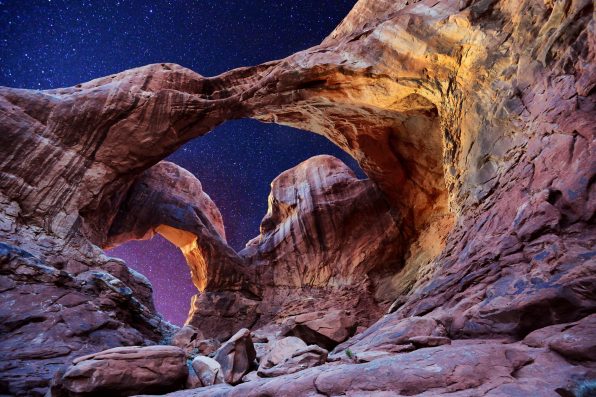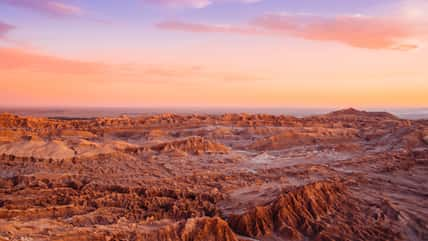The Double Arch, An Iconic Stone Landmark In Utah That Formed 190 Million Years Ago, Recently Collapsed After Naturally Reaching The End Of Its Lifespan

At Glen Canyon National Recreation Area in southern Utah, an iconic landmark known as the Double Arch collapsed recently. Experts say that the demise of the impressive stone structure was bound to happen sooner than later.
The geological formation serves as a reminder that most arches do not remain standing forever. When an arch collapses, that means it has naturally reached the end of its lifespan.
So, the goal is not to prevent them from disintegrating altogether but to extend their lifespan.
“Our mission is not to freeze time and preserve these structures exactly as they are,” Karen Garthwait, the spokesperson for Arches and Canyonlands National Parks, said. “Our mission is to preserve the natural processes that create these structures, which, of course, is the same process that will eventually undo them as well.”
The Double Arch formed about 190 million years ago, according to the National Park Service. Within the past hundred years, human activity has sped up erosion.
Wind and weather conditions, as well as changes in water levels, have also contributed to the arch’s collapse.
The external appearance of an arch does not provide many clues as to its stability. The arches that seem most sturdy can have internal cracks, while the ones that look like they could fall apart at any second may actually hold up better against the elements.
The sandstone bedrock in southern Utah is strong enough to support large arches but soft enough to be shaped over time by water, wind, and gravity, per the Utah Geological Survey. The semi-arid climate in the region also helps form and maintain the majestic arches.
The National Park Service has taken action to limit human interference with the geological structures. Human activity over the span of decades can affect arches, although experts are unsure just how much of an impact it has.

ipivorje – stock.adobe.com – illustrative purposes only – not a photo of the original collapsed arch
As recently as 20 years ago, park visitors often walked on top of arches and hung off them for photos.
One person even climbed the Delicate Arch in Utah, leaving rope grooves in the sandstone. To this day, the imprints can still be seen. The incident led park officials to emphasize that climbing arches was prohibited in 2006.
Canyonlands National Park, which is located northeast of Glen Canyon in Utah, bans visitors from standing or climbing on the arches.
Furthermore, air restrictions were established in the area surrounding one of the world’s largest natural bridges, Rainbow Bridge National Monument in the southern part of the state, after studies showed that helicopters could speed up damage to the arch.
“Some people have the sense that rock is strong and humans don’t affect it,” Jeff Moore, a geology and geophysics professor at the University of Utah, said.
“When these kinds of collapses happen, it’s a reminder that arches are really fragile. Subtle changes can make a difference.”
To see a photo of the collapsed arch from the National Park Service, please visit the link here.
*On September 1, a correction was issued on this story to clarify that the featured image does not illustrate the original collapsed arch. We provided a link to a press release from the National Park Service showing the collapsed arch.*
Sign up for Chip Chick’s newsletter and get stories like this delivered to your inbox.
More About:News





